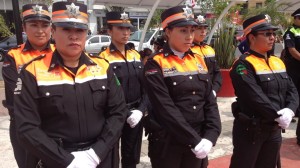 A recent story on NPR talked about the high rate of suicide in Wyoming (highest in the US), with most of those committed with guns – Wyoming also has one of the highest rates of gun ownership in the US. The story deals with a woman whose two sons killed themselves with guns. She said that talking about suicide isn’t easy and in Wyoming its connection to guns makes it even tougher: “I think we have a cultural norm here in Wyoming where, for lack of a better word, you know, cowboy up, you know, be tough, you know, don’t – it’s not OK to get help.” Guns are of course a core part of cowboy culture, as is rugged, self-sufficient individualism. But it’s not just Wyoming. In the US cowboy culture is still idealized (note the popularity of Toy Story cowboy) and a large part of the cultural history of the United States. It’s bucking up against that culture that makes gun control such a difficult step.
A recent story on NPR talked about the high rate of suicide in Wyoming (highest in the US), with most of those committed with guns – Wyoming also has one of the highest rates of gun ownership in the US. The story deals with a woman whose two sons killed themselves with guns. She said that talking about suicide isn’t easy and in Wyoming its connection to guns makes it even tougher: “I think we have a cultural norm here in Wyoming where, for lack of a better word, you know, cowboy up, you know, be tough, you know, don’t – it’s not OK to get help.” Guns are of course a core part of cowboy culture, as is rugged, self-sufficient individualism. But it’s not just Wyoming. In the US cowboy culture is still idealized (note the popularity of Toy Story cowboy) and a large part of the cultural history of the United States. It’s bucking up against that culture that makes gun control such a difficult step.
It’s not just the USA. One of the other countries with a very high ownership of guns is Switzerland, yes that neutral, peaceful Alpine republic. Depending on how it’s measured, Swiss gun ownership is number 3 or 4 in the world. Switzerland has a strong tradition of a militia-style army, with compulsory military service for men (or longer alternative civilian service) who stay in the reserves till the age of 30. Those serving in the army keep their Army-issued rifles at home, ready in case the French invade across Lake Geneva, or, the Teutonic cousins pour in from the north. The substantial part that weapons play in Swiss life (Schützenfeste – shooting festivals continue to be popular) is in marked contrast to other European countries, where it is quite difficult to obtain a firearm. As in the US, gun ownership is embedded in Swiss cultural history. The Swiss are proud of the independence they fought to achieve from the Habsburgers in the 13th century, which in fact led to the founding of the federal Swiss state. The weapons used, especially the halberd, were mostly fashioned by farmers, yet they defeated the mighty Habsburg knights. Since then, of course, the Swiss have had many occasions when it was important that they be able to guard their borders against intruders.
In both US and Swiss cultures, weapons and armed citizen farmers were an important part of the founding of the nation and have become national myths, William Tell’s heroic fight against Austrian tyranny or George Washington’s ragtag army defeating the mighty British redcoats. Weapons are part of the DNA of both cultures – the attachment is visceral and deep. We can talk all we want about safety and security or the traditions of hunting and fishing, but attitudes in the US towards gun ownership go much deeper than that. For many Americans restricting gun ownership tears at the fabric of their cultural identity.
One of the indicators of how deeply guns are embedded in the American cultural DNA is the large number of gun metaphors we use, as discussed in a recent NPR story:
In January, when Vice President Biden concluded a week of meetings at the White House over how to curb gun violence, listen to the words he chose to describe the complexity.
VICE PRESIDENT JOSEPH BIDEN: We know that it is – there is no silver bullet.
BLOCK: And as for when he’d make his proposal?
BIDEN: I’m shooting for Tuesday. I hope I get it done by then.
BLOCK: No silver bullet. Shooting for Tuesday. Just two examples of how pervasive gun language is in our everyday speech. Think about it: We bite the bullet, sweat bullets, ride shotgun, stick to our guns, jump the gun, go ballistic, and shoot from the hip. If she’s a straight-shooter, he’s a real pistol. Oh, he’s a little gun shy. What a hot shot. Son of a gun.
It would be an interesting socio-lingusitc study to see if in fact American English tends to use more such expressions than is the case in Britain or Australia.
 If you see beer being poured over someone’s feet, what would be your reaction? In Thailand, this is disparaging action and part of a protest against a prominent beer brand, Singha. It’s not a protest concerning the quality of the product – Singha is a well-known brand. It concerns comments from Chitpas Bhirombhakdi, 28, the Singha beer heiress who was quoted last month in a widely circulated article saying that many Thais lack a “true understanding” of democracy, “especially in the rural areas.” This comes from a NY Times article published this week-end. She was reacting to the continued support for the current government, Prime Minister Yingluck Shinawatra, brother of former leader Thaksin Shinawatra, from Thais in the poor, rural areas of the country. The Singha heiress is part of the group trying to oust the Prime Minister. In contrast to what one normally expects from protests – namely a call for more democracy, the rich and powerful in Thailand are calling for less democracy, “The demonstrators want a hiatus from democracy, replacing it with rule by a ‘people’s council’ selected from various professions in the country. Many say they yearn for a return to the absolute monarchy because Thailand is not ready for democracy.”
If you see beer being poured over someone’s feet, what would be your reaction? In Thailand, this is disparaging action and part of a protest against a prominent beer brand, Singha. It’s not a protest concerning the quality of the product – Singha is a well-known brand. It concerns comments from Chitpas Bhirombhakdi, 28, the Singha beer heiress who was quoted last month in a widely circulated article saying that many Thais lack a “true understanding” of democracy, “especially in the rural areas.” This comes from a NY Times article published this week-end. She was reacting to the continued support for the current government, Prime Minister Yingluck Shinawatra, brother of former leader Thaksin Shinawatra, from Thais in the poor, rural areas of the country. The Singha heiress is part of the group trying to oust the Prime Minister. In contrast to what one normally expects from protests – namely a call for more democracy, the rich and powerful in Thailand are calling for less democracy, “The demonstrators want a hiatus from democracy, replacing it with rule by a ‘people’s council’ selected from various professions in the country. Many say they yearn for a return to the absolute monarchy because Thailand is not ready for democracy.”







